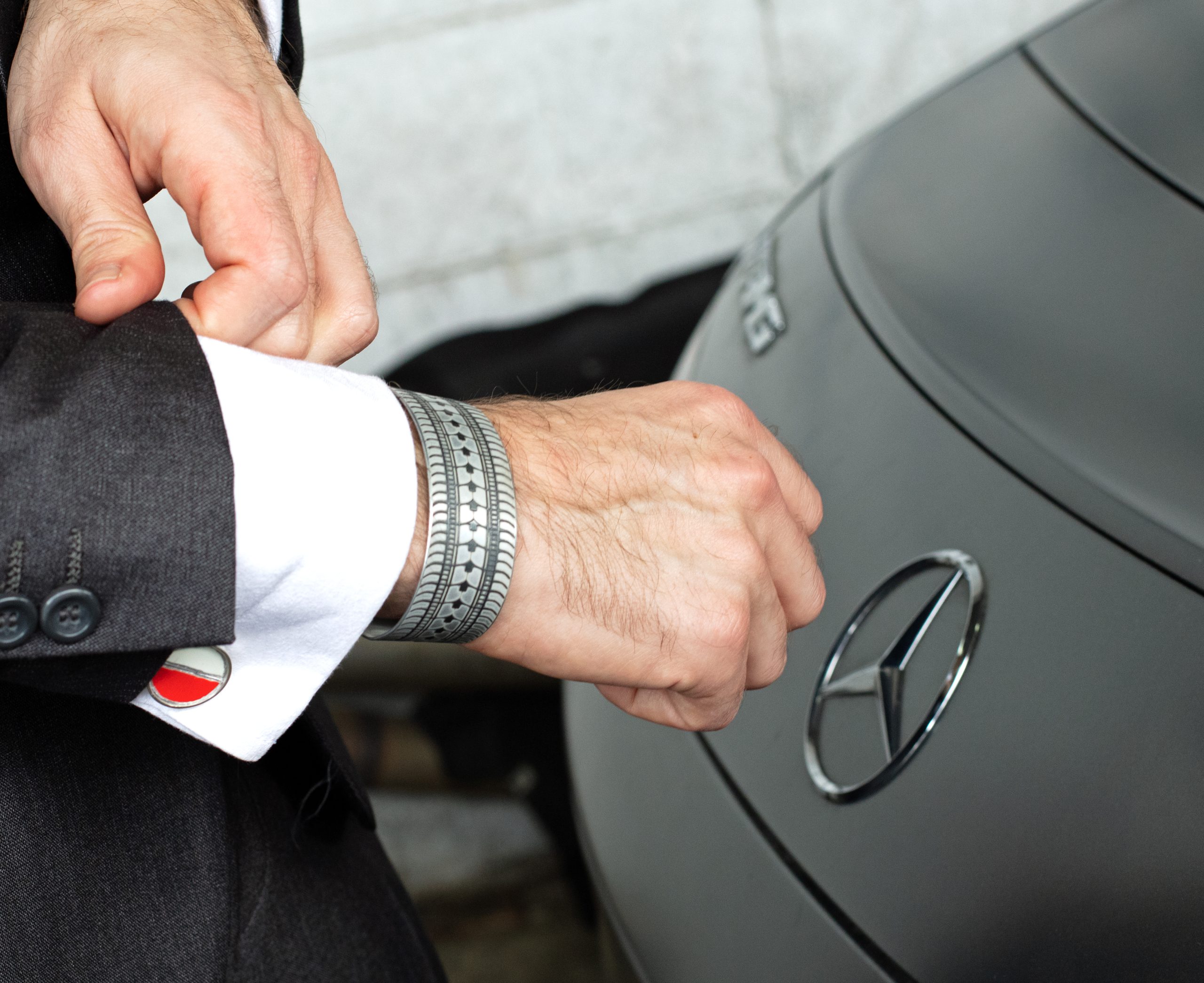Using your shop’s Cost of Doing Business (CODB) as a baseline for labor rates.

Christi Schimpke still remembers the Bentley GT that inspired it all. Her husband’s auto body shop, Beverly Coachcraft, is 20 minutes from Beverly Hills and specializes in repairing high-end luxury vehicles. This particular $200,000-plus British import that took her breath away was painted Windsor Blue.
“The factory finish on some of these cars is amazing,” she said. “It reminded me of enamel, and I wondered if there was anything I could do with it.”
That was about a decade ago, shortly after she quit her career in art history, trained in metalsmithing, and decided to focus full-time on artisanal jewelry making. The prices of silver and gold were near historic highs at that time, so she was interested in working with other materials. A conversation with another artist who was making collages out of auto parts convinced her it was worth trying.
In 2013, she launched CRASH Jewelry, after months of painstaking testing and learning how to best form cuffs, cuff links, earrings, necklaces and more using crash-damaged hoods, doors and fenders left over from the extravagant vehicles that came into the shop. Her studio was adjacent to the garage, and when something would roll in that caught her eye, she’d request it from her husband, Dan. (Excluding anything in which an injury occurred. She said all scraps have been sourced from vehicles in fender benders.)

Christi Schimpke working in her shop. CRASH Jewelry photo.

Dan Schimpke cutting up a vehicle panel in his garage. CRASH Jewelry photo.
After the vehicle was repaired, all the paperwork was done, and the owner declined to take back the leftover scrap, she would add it to her own inventory to start working on.
Beverly Coachcraft is a certified Mercedes collision facility, so naturally the first piece of metal Schimpke experimented with was the hood of a Mercedes SLS coupe.
“It was very crude in the beginning,” Schimpke said. “My husband explained to me that the paint doesn’t want to be bent. I would cut out the shape, and as soon as I would bend it, the paint would fall apart. I would normally solder metals together, but I couldn’t use open flame because it would ruin the factory paint. I needed to learn how to rivet on a curved field. It took a long time.”
She eventually learned a few different techniques, which became a bit of her own secret sauce. Today, she sells jewelry from 18 different makes, ranging from exotic makes like Ferrari, Lamborghini, and McLaren, to domestic models like Mustang, Charger, and Corvette. She’s largely reliant on vehicles that come into the shop, but she also visits salvage yards if she’s looking for something specific. All the paint on each item is the factory paint, so she’s always collecting different colors, which she stores in a library in her studio.

Cuff made from hood of an Aston Martin Rapide S. CRASH Jewelry photo.
As CRASH has become more widely known, people have started sending her their own scraps and asking if she can make something out of them. Some are professional race car drivers, while others are just regular people who loved their vehicles and wanted to have a keepsake of them.
In one case, a man approached Schimpke about making something out of his father’s beloved Mazda Miata after he passed away. He sent her a piece of the fender, and she produced a necklace his mother could wear to always keep a memory of her husband close to her.
“People really have these deep emotional connections to their vehicles,” she said.

Cuff made from fender of Lamborghini Gallardo. CRASH Jewelry photo.
Over time, she’s learned a lot about different paints, and has a few favorites. Newer paint is more forgiving, and she almost exclusively works with late-model vehicles, because that’s what rolls into the shop. Red paint, though, is notoriously hard to work with.
“It cracks and feathers more so than other paints,” she said. “If anyone can let me know why, that would be a huge help.”
She’s also noticed the quality of paint is obvious from some makes to others.
“Ferrari paint is so thick and luscious,” she said. “Then I have a Mustang GT here, and it’s not so good.”

Cuff links made from Ferrari 360 Challenge Stradale in rosso corsa and a white Ferrari 458. CRASH Jewelry photo.
She prefers to work with fenders, since there are fewer internal components to remove compared to a door or hood. Her pieces are usually made with steel and aluminum, but she’s also started working with fiberglass, which has allowed her to started making pieces out of Corvettes. In fact, she’s started producing jewelry for the National Corvette Museum in Bowling Green, Kentucky, using panels the museum has sent her.
Her customers these days are car fanatics, which is no surprise not only because of the type of product, but also because she’s been successful marketing her products at car shows. She’s found that her most loyal customers are Porsche owners, although she’s been starting to see more requests for domestic-made jewelry, such as pieces that use pieces of Camaros and Jeeps.

Cuff made from right rear door of a Mercedes-Benz Maybach S600. CRASH Jewelry photo.
In a few cases, the jewelry business has even led to more business for the body shop.
“A few people have heard about CRASH,” she said, “and then reach out to me to see if the body shop can help fix their vehicle.”
The articles and other content contained on this site may contain links to third party websites. By clicking them, you consent to Dorman’s Website Use Agreement.
Participation in this forum is subject to Dorman’s Website Terms & Conditions. Please read our Comment Policy before commenting.